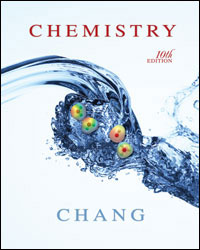1 o C?A) CH3 OH(l) B) CO(g) C) MgCO3 (s) D) H2 O(l) E) H2 O(g) 2 A) O2 (g) B) N2 (g) C) CO(g) D) CO2 (g) E) C4 H10 (g) 3 D S for the following process:
Pb(s) + Cl2 (g) ----> PbCl2 (s).A) D S < 0B) D S > 0C) D S = 0D) More information is needed to make a reasonable prediction. 4 D So rxn for the following reaction:
4 Cr(s) + 3 O2 (g) ----> 2 Cr2 O3 (s).Substance D S, J/K·molCr(s) 23.77 O2 (g) 205.138 Cr2 O3 (s) 81.2
A) 548.1 J/K B) 147.7 J/K C) -147.7 J/K D) -548.1 J/K E) None of the above. 5 2 (g), for which D Ho = 90.84 kJ/mol and D So = 108 J/K.mol. Which of the following statements is true for this reaction?A) The reaction is spontaneous only at low temperatures. B) The reaction is spontaneous at all temperatures. C) D Go becomes less favorable as temperature increases.D) The reaction is spontaneous only at high temperatures. E) The reaction is at equilibrium at 25 o C and 1 atm pressure. 6 2 O2 (g) stable? For the reaction H2 O2 (g) -----> H2 O(l) + 1/2 O2 (g),
D Ho = -106 kJ/mol; D So = 58 J/K.A) No. B) Yes, if the temperature is low enough. C) Yes, if the rate of decomposition is low. D) Yes, if the O-O bond energy is greater than the O-H bond energy. E) Yes, under all conditions. 7 D Ho , D So ,
D Go for the vaporization of water at 50 o C areA) positive, positive, and positive. B) negative, negative, and negative. C) positive, negative, and positive. D) positive, positive, and negative. E) More information would have to be given to answer the question. 8 D Go at 298 K for the combustion of propane:
C3 H8 (g) + 5 O2 (g)
----> 3 CO2 (g) + 4 H2 O(l)Substance D Go f , kJ/molC3 H8 (g) -23.0 O2 (g) 0 CO2 (g) -394.6 H2 O(l) -237.2
A) 2109.6 kJ/mol B) 608.8 kJ/mol C) -608.8 kJ/mol D) -2109.6 kJ/mol E) None of the above. 9 A) 100 o C B) 375 o C C) 0 o C D) 25 o C 10 D Go for the dissociation of HF in H2 O at 25 o C. [Ka of HF = 6.9 x 10-4 at 25 o C].A) -18 kJ B) 7.83 kJ C) -7.83 D) 1.51 kJ E) 18 kJ 11 A) True B) False 12 A) Energy changes in a system B) Entropy C) Both entropy and change in enthalpy D) none of the above 13 A) True B) False 14 A) An exothermic process results in a decrease in the entropy of the surroundings. B) An exothermic process transfers heat from system to surroundings. C) An endothermic process absorbs heat from within the system. D) An endothermic process increases the entropy of the surroundings. 15 A) the reaction is spontaneous in the forward direction. B) the reaction is non-spontaneous or spontaneous in the opposite direction. C) the system is in equilibrium. D) none of the above.





